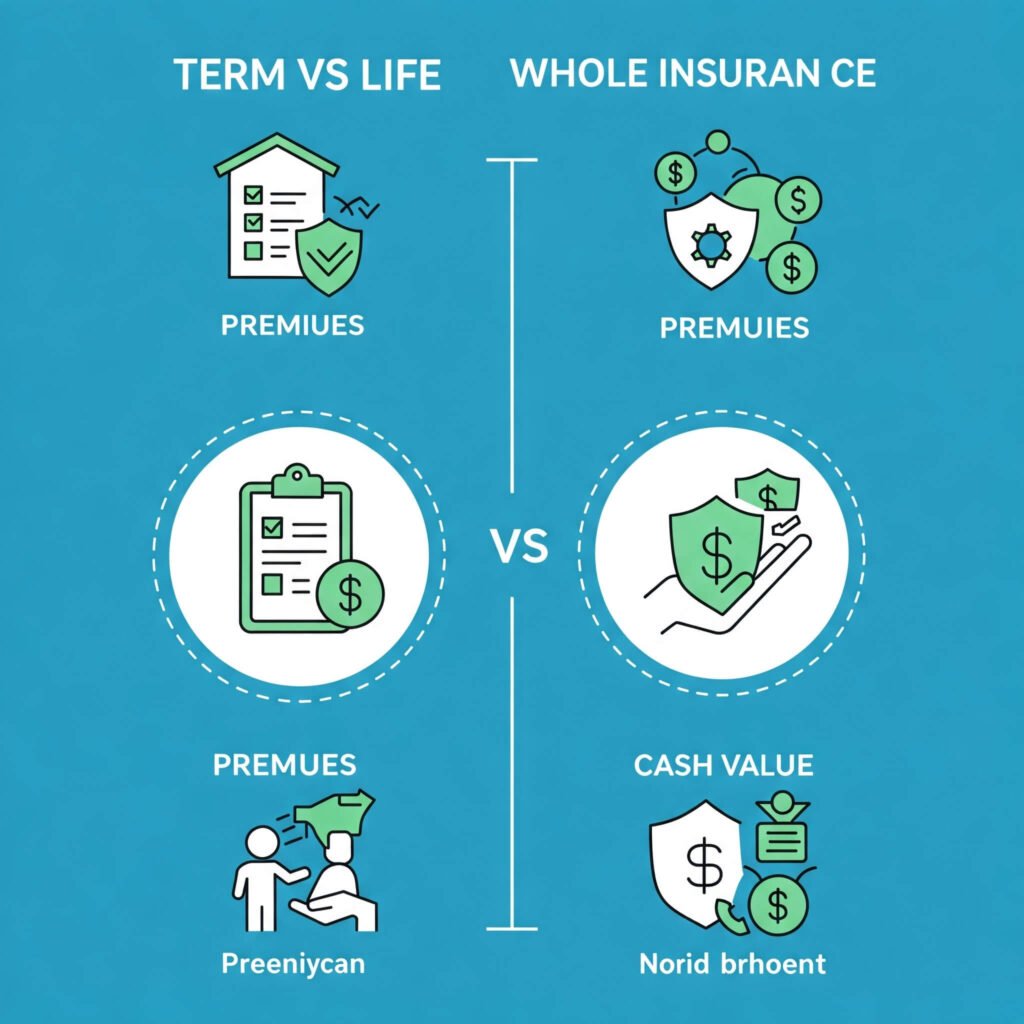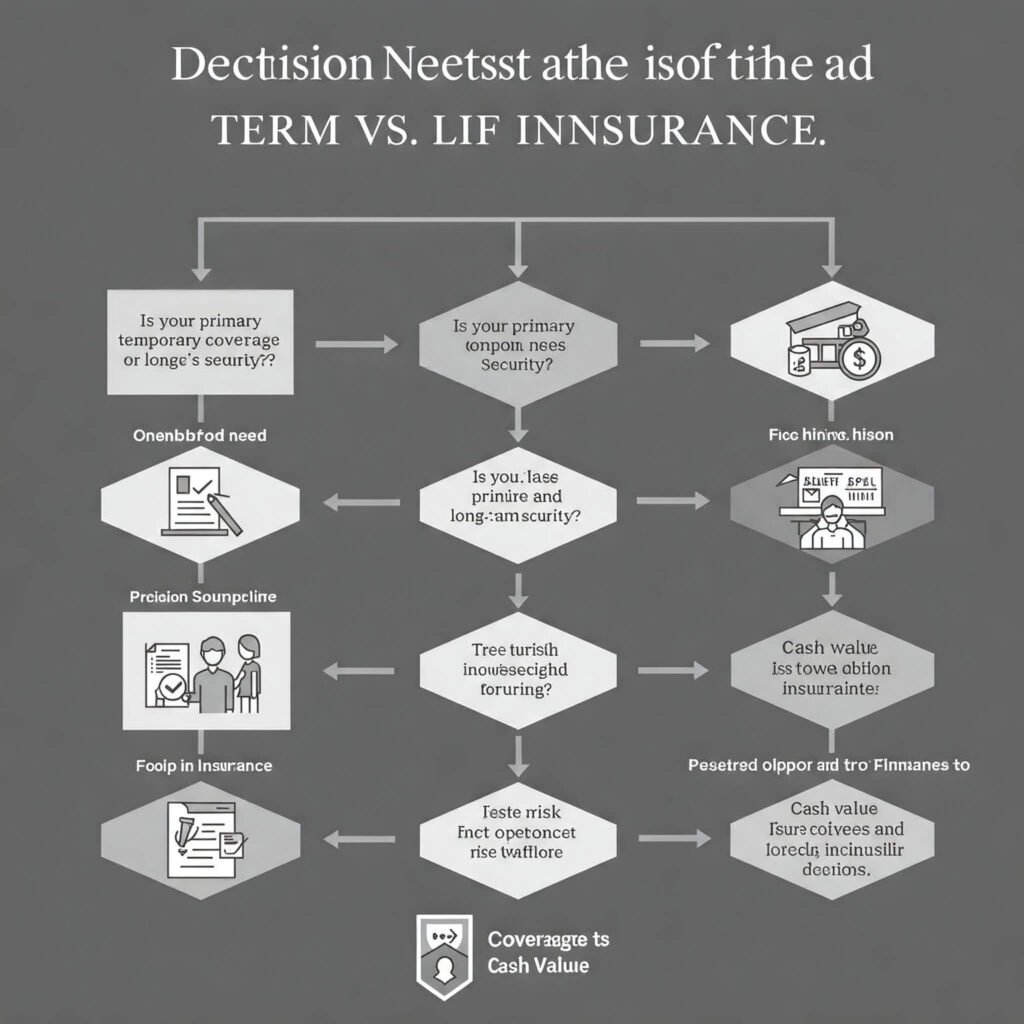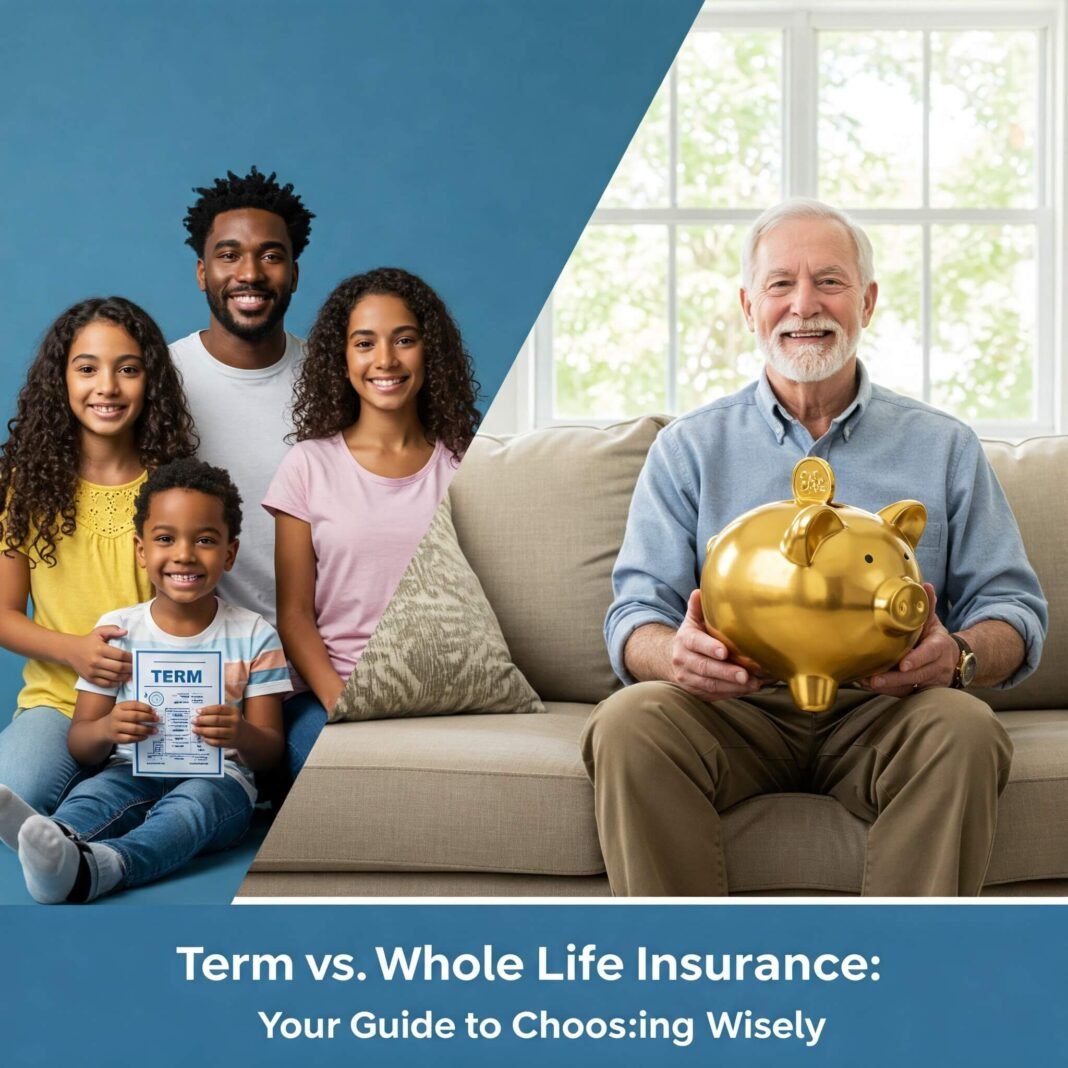Life insurance acts as a financial safety net for your family if you pass away. The two main types—term life insurance and whole life insurance—serve different purposes. Term life covers a specific period, while whole life offers lifelong protection with additional financial perks. Let’s dive into what sets them apart.

Exploring Term Life Insurance
What Is Term Life Insurance?
Term life insurance provides coverage for a fixed period, such as 10, 20, or 30 years. If you pass away during the term, your beneficiaries receive a death benefit. It’s a budget-friendly option for those with temporary financial responsibilities.
Benefits of Term Life Insurance
- Affordable Premiums: Term life is typically much cheaper than whole life, ideal for young families or those on a tight budget.
- Flexible Terms: Select a term that matches your needs, like the duration of a mortgage or until your kids are independent.
- Straightforward: No complex investment features—just simple protection.
Drawbacks of Term Life Insurance
- Limited Duration: Coverage ends when the term expires, and renewing or buying a new policy may cost more due to age.
- No Savings Component: Term life doesn’t accumulate cash value over time.
Example: Sarah, a 35-year-old mother of two, chooses a 20-year term life policy to cover her mortgage and her children’s education costs. The low premiums suit her budget, giving her peace of mind.
Diving Into Whole Life Insurance
What Is Whole Life Insurance?
Whole life insurance offers coverage for your entire life, provided premiums are paid. It includes a cash value component that grows over time, functioning as a savings or investment tool.
Benefits of Whole Life Insurance
- Permanent Coverage: You’re protected for life, with no risk of outliving your policy.
- Cash Value Accumulation: Part of your premiums builds cash value, which you can borrow or withdraw.
- Stable Premiums: Premiums remain fixed, unaffected by age or health changes.
Drawbacks of Whole Life Insurance
- Higher Costs: Premiums are significantly more expensive, which may not suit all budgets.
- Complexity: The investment aspect can be confusing without financial expertise.
Example: John, a 45-year-old business owner, selects whole life insurance to secure his spouse’s future and build cash value for retirement. He plans to borrow against the policy for a future business project.

Comparing Term and Whole Life Insurance
| Feature | Term Life Insurance | Whole Life Insurance |
|---|---|---|
| Coverage Period | Fixed term (e.g., 10, 20, 30 years) | Lifetime |
| Premiums | Lower, may increase upon renewal | Higher, fixed |
| Cash Value | None | Builds over time |
| Best For | Temporary needs (e.g., mortgage, kids) | Long-term wealth building, lifelong coverage |
Data Insight: The Insurance Information Institute reports that term life insurance makes up 70% of policies due to its affordability, while whole life attracts those focused on long-term financial planning (III.org).
Choosing the Right Policy for You
Selecting between term vs. whole life insurance hinges on your financial priorities, budget, and life stage. Consider these factors:
- Budget: Can you manage whole life’s higher premiums, or is term life’s affordability a better fit?
- Financial Objectives: Are you covering short-term needs (e.g., a mortgage) or building long-term wealth?
- Life Stage: Younger people may prefer term life’s flexibility, while older adults may value whole life’s permanence.
- Risk Tolerance: Whole life’s cash value offers guaranteed growth, unlike riskier investments.
Actionable Tip: Try an online life insurance calculator from trusted platforms like Policygenius to estimate coverage based on your income, debts, and dependents.

Clearing Up Life Insurance Myths
- Myth: Term life is always better because it’s cheaper.
Truth: Term life is cost-effective, but whole life may be ideal for lifelong coverage or cash value growth. - Myth: Whole life insurance is unaffordable for most.
Truth: Policies can be customized to fit various budgets, and cash value can offset costs over time. - Myth: You can’t convert term to whole life later.
Truth: Many term policies allow conversion to whole life without a new medical exam (NerdWallet).
Final Thoughts: Securing Your Future
Choosing between term vs. whole life insurance means aligning the policy with your unique needs. Term life is great for affordable, temporary coverage, while whole life offers lifelong security and savings potential. Consult a licensed insurance advisor to review your options and get tailored quotes.
With a clear understanding of both policies, you’re equipped to make a decision that protects your family’s future.





